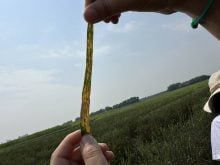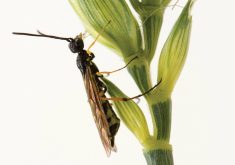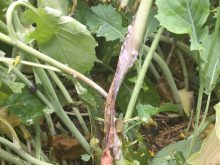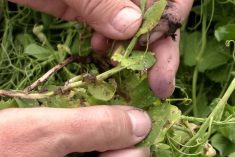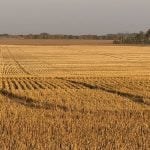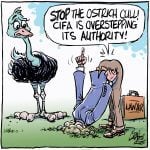The title of this piece might suggest that the author is an authority on plant disease, but that is not true. For this I have my farmer hat on. There is nothing like a little skin in the game to force one to read the literature and learn. My rotation had been wheat/peas/wheat/canola for 15 years with little disease problems. But I now know that is not a sustainable rotation and fusarium head blight is the big culprit.
Some history
Until about 2010 FHB was a Manitoba problem. In 2010 my wheat crop had some of that ugly pink/orange colour on the sick looking part of some heads and it was like a blow to the head. I could still take you to the exact spot I first observed that dreaded but unmistakable colour. We had heard about folks in Manitoba augering wheat into the bush as the FHB left it with no market. There are also stories about digging holes and burying it, but I have yet to talk to anyone who has done that.

In 2011 there was no big problem in our area so we thought it was a one-off. But, in 2012 I had Goodeve (midge tolerant) wheat with Low FHB resistance and it was really scary. I still managed to sell it as No. 2 for $8.30/bushel — anyone remember that price?
In 2013 I had no wheat, but most wheat crops in our area were sprayed with fungicide for FHB. But, few needed to, as it was a year with very low FHB problems. In fact, 2013 was “next year” on many Prairie farms with yields many very old folks had never seen before and good quality to boot.
In 2014 I planted Waskada wheat with moderate resistance to FHB and sprayed with expensive fungicide (Prosaro) but still had FHB. It was a good yield and still marketable but it was high time to learn more. By then it seemed as though FHB was bad on even numbered years when I was growing wheat.

The literature
A University of Saskatchewan colleague provided a literature review paper on FHB by Marcia McMullen from North Dakota State University. It is a good piece of work and it answered one burning question: “What are the environmental variables that ‘juice up’ FHB? About weather and FHB risk, they said the best model used “the duration of hours that relative humidity was greater than 90 per cent when temperatures were between 15 C and 30 C for the 10 days after anthesis.”
Our FHB weather
At that time I used the Saskatoon Environment Canada data to check out the 90 per cent relative humidity and 15 C rule and found it fit our experience very well. In 2014 we also pointed out that Manitoba Agriculture had a website with a daily map of FHB weather risk and urged Saskatchewan to do the same.
Read Also
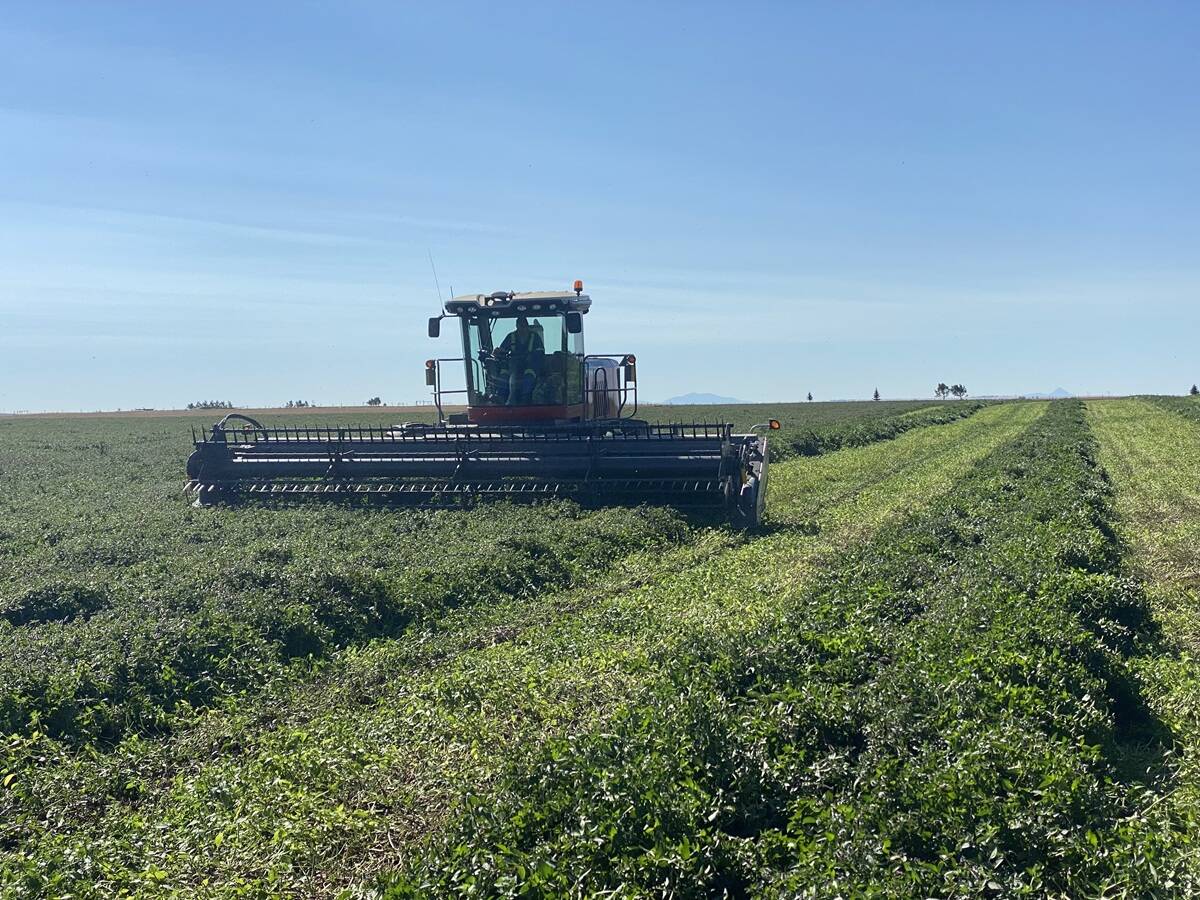
How a southern Alberta farm maintains mint condition
An estimated 25 per cent of North America’s mint oil is now the product of a southeastern Alberta farming business, but don’t get the idea that commercial mint production is a job for the faint of heart.
I am happy to report that the Saskatchewan Wheat Development Commission has partnered with the WIN Network of weather stations and Saskatchewan Agriculture to produce FHB risk maps for Saskatchewan on a daily basis in season. It is on the SWDC website (www.saskwheatcommission.com). I have used that map often.
I have now compiled a table of data for seven years, 2010 to 2016 inclusive.
With seven years of continuous data it is clear that the criteria as established by decades of work in the U.S. fits our situation very well. Both 2011 and 2013 were clearly not favourable for FHB development. 2015 was intermediate, with more risk than 2011 or 2013 but July 2015 saw many days in the grain growing area with thick smoke from the northern forest fires.

A smoke screen?
You may well say, “What does smoke have to do with FHB?” That question brings me to a very old treatise written in 1857 by Henry Youle Hind entitled “Essay on the Insects and Diseases Injurious to the Wheat Crops.” (To read the whole piece, visit www.biodiversitylibrary.org, and search for the title in the search box.)
Hind was a Professor of geology and chemistry at Trinity College in Toronto. He also explored the Canadian West in 1857-58 and wrote two volumes describing his findings. He had figured out what it would take to build a dam to push the South Saskatchewan River down the Qu’Appelle/Assiniboine system to service river navigation. He was no dummy!
In his essay on wheat he devoted an entire chapter to wheat midge. In 1970 to 80s we thought it was something new. It was new to us, but not new.
On diseases, Hind he did not deal with FHB but did talk about rust, smut, bunt and ergot.
On page 121 he relates rust to mists or fogs in July and August, rich in ammonia. What was needed was an agent to absorb the ammonia in a form that would not “juice up” the disease. He then goes on to say that powdered charcoal would be that agent. He described the use of powdered charcoal to cut ammonia odour from fermenting urine in stables and other examples.
That led me to wonder what role, if any, the thick smoke of 2015 had on plant disease.
Recent work
FHB has been such a serious problem in many states of the U.S. that much work has been done. A very recent document is “Proceedings of the 2016 National Fusarium Head Blight Forum” held at St. Louis, Missouri, U.S., December 4 to 6, 2016. The complete piece is available at www.scabusa.org.
A paper by Yabwalo et al. dealing with winter wheat in South Dakota concluded that the “Use of resistant cultivars, monitoring conducive weather for FHB, and applying a triazole fungicide at flowering when moderate to high FHB risk is predicted, remain the most effective integrated management of FHB.” But, that does not fix the problem.
The future?
Even with the decades of work in the U.S. we are still left with Band-Aids to deal with a very big knife cut. Varieties so far offer moderate resistance at best, and fungicides are also a Band-Aid. My answer is to use the most expensive fungicide and try to get the best possible timing but all of that does not “fix” the problem.
Longer rotations are great to talk about but difficult to implement. Perhaps we should be stepping back and looking for entirely new approaches. If high ammonia in the atmosphere is a factor we should at least start to measure how much atmospheric ammonia is present. I have found extensive data on atmospheric ammonia in the U.S. but nothing for our part of the world. Perhaps a reader will enlighten me.
When I look at areas of FHB, the most serious infection is where the crop is the best — that is, a high nitrogen environment. Unless plant breeding has a huge breakthrough we must expand our horizon of potential solutions.




